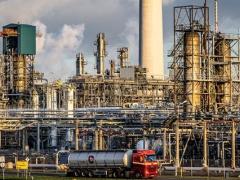Global and regional abatement costs of INDCs and of enhanced action to levels well below 2 °C and 1.5 °C
Under the Paris Agreement, countries agreed to keep the increase in global average temperature to well below 2 °C above pre-industrial levels. Current climate action plans would deliver half the emission reductions required by 2030 to achieve the 2 °C objective. However, the costs for achieving the 2 °C objective are 3 to 3.5 times higher than the costs of achieving the climate action plans.
This report provides projections of the abatement costs of achieving the Intended Nationally Determined Contributions (INDCs; the climate action plans submitted by countries before Paris) as well as of more ambitious scenarios. These more ambitious scenarios explore how the Paris Agreement’s climate targets could be achieved, and distribute emission reductions cost-optimally among regions (least-cost pathways).
Annual costs of achieving unconditional INDCs projected at USD 58–135 billion by 2030
Several countries provided both conditional and unconditional targets, the conditions of which often related to international finance. Global abatement costs for implementing the unconditional INDCs are projected at USD 58 to 135 billion by 2030, depending on baseline assumptions; about 70% of these costs are projected to take place in the major industrialised countries the United States, Canada, Europe, Japan, Australia and New Zealand, which together were responsible for about 30% of global emissions in 2012.
Additional costs of achieving conditional INDCs mainly take place in developing and emerging economies
The study estimates the costs of achieving the additional reductions of the conditional INDCs at about USD 39–56 billion, of which USD 33–46 billion would be needed for efforts in developing and emerging economies, and may be subject to international financing.
Costs of 2 °C pathways much higher than those of current INDCs
The conditional INDCs already would halve the difference in global emission levels between baseline and least-cost pathways to 2 °C by 2030. However, the difference remains large, in terms of abatement costs. Globally, the costs of achieving 2030 emission levels that are consistent with least-cost pathways to 2 °C are projected to be 3 to 3.5 times higher than those cof achieving the conditional INDCs. The largest increase in costs under such least-cost pathways would be in China, India, and Russia, as these countries are projected to have the largest additional reduction potential relative to their INDC targets. This raises large political questions regarding the financing of these emission reductions.
Authors
Specifications
- Publication title
- Global and regional abatement costs of INDCs and of enhanced action to levels well below 2 °C and 1.5 °C
- Publication date
- 9 November 2016
- Publication type
- Publicatie
- Product number
- 1994




